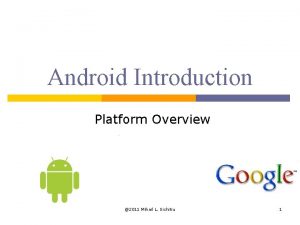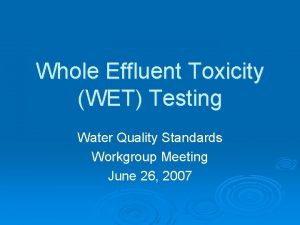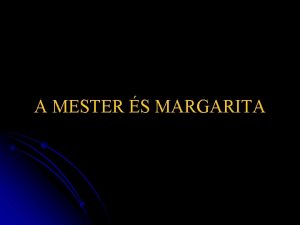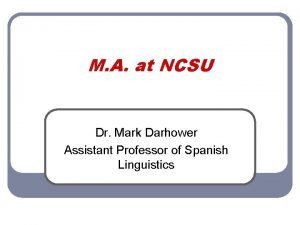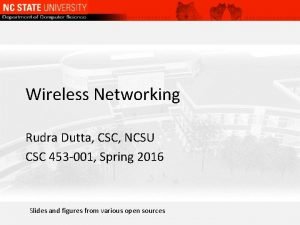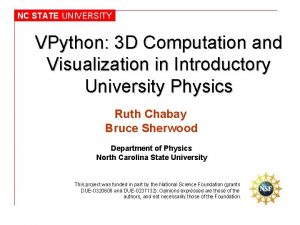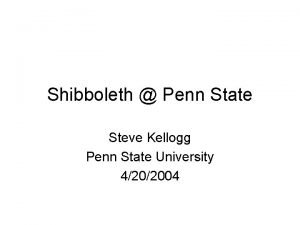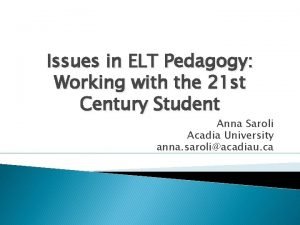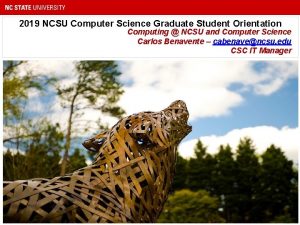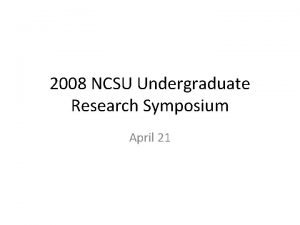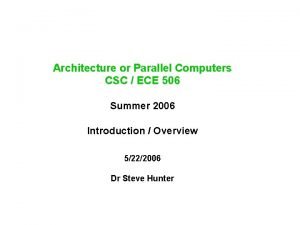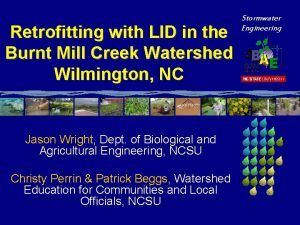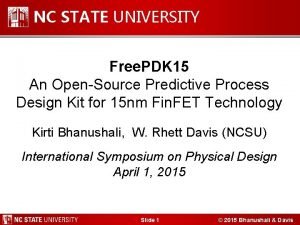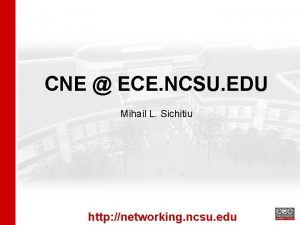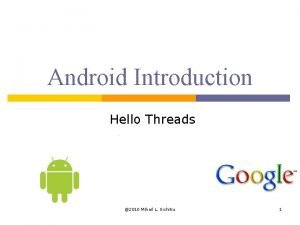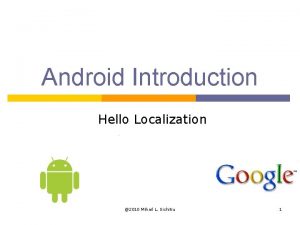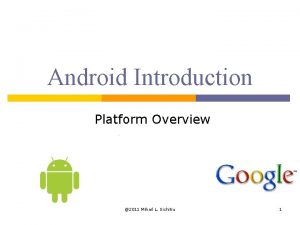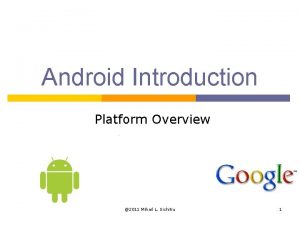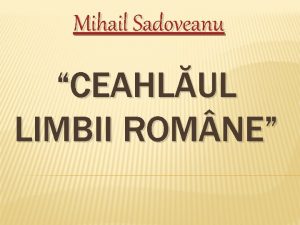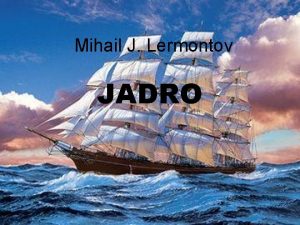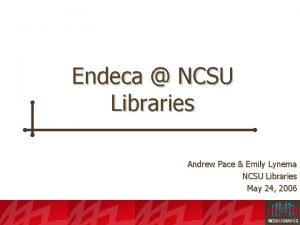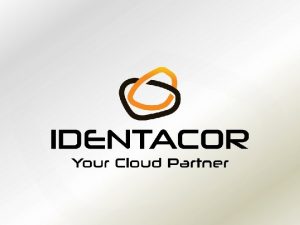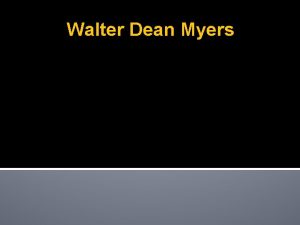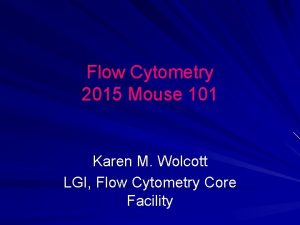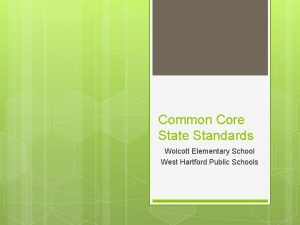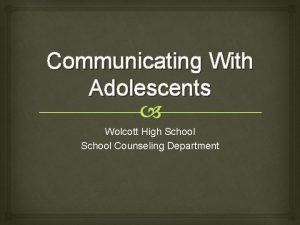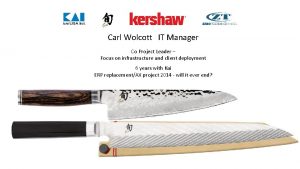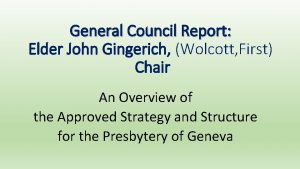Thomas G Wolcott Alex Dean Mihail Sichitiu NCSU






















- Slides: 22

Thomas G. Wolcott, Alex Dean, Mihail Sichitiu NCSU - MEAS and ECE

Participants • North Carolina State University – Alex Dean, Mihail Sichitiu - Electrical and Computer Engineering – Thomas G. Wolcott - Marine, Earth and Atmospheric Sciences (Emeritus) • Chesapeake Bay Environmental Center (CBEC) – Vicki Paulas, Judy Wink – Mission: Promote stewardship and sustainability through environmental education and habitat restoration. – Four artificial reefs for oyster bars and fish habitat. • South-Eastern Coastal Ocean Observing Regional Association (SECOORA)

Goals for the “CEMS” System • • Networked—data to web in real time Reliable—data secure Versatile—wide variety of sensors Citizen/Student-friendly—public “ownership” • Economical—permits dense arrays, high resolution

“Lab” Test Site

Field Test Sites Smithsonian Environmental Research Center (SERC) Chesapeake Bay Environmental Center (CBEC)

Sample Data: Depth

Temperature

Temperature and Salinity Noon Sep 16 Midnight Sep 17 Noon

Transmissivity Noon Sep 16 Midnight Sep 17 Noon

Oyster Gapes (2 individuals) Noon Sep 16 Midnight Sep 17 Noon

Oyster Gapes (all) Noon Sep 16 Midnight Sep 17 Noon

Battery and Solar Panel Voltages

CEMS Approach Web Server Internet SECOORA Web Server Comm. Link Module (Linux SBC on piling or buoy) Datalogger module Instrumented Oysters & Environmental Sensors 3 G Cell Network Smartphone/Tablet for Opportunistic Data Collection, Display and Relay Image courtesy NOAA

Sensors “ABLE” brain controls, reads… Salinity & Temperature Depth/Pressure Oyster Gape Transmissivity

Price for CEMS Node Server, access point, cable modem: Comm Link Module, wi-fi card, antenna: Power supply (PV/controller, battery, V-regs): Datalogger module: Sensors Depth $30 Temp: 2 @ $3 Salinity, mostly machining, 2 Transmissivity (mostly machining, ) 2 Oyster gapes: 16 @ $3/oyster $600 $200 $335 $100 $200 $ 6 $ 20 $100 $ 50 Plus incidentals: PVC frame, cables, housings… Total (one logger module, one comm. module) ~$1500

What Next? • Standardize sensor-datalogger protocols too • Sensor refinement and development – Easy variables: waves, currents – Hard variables: DO, p. H, nutrients… • [Nearly] Real-time data downloading and viewing – On SECOORA website – on students’/visitors smart phones or Android tablets • A mobile datalogging module that can be towed by small boat, and log appropriate additional variables en route: – Light (PAR) – GPS position – Boat’s compass heading

There will be a slight delay… You are Here

Thank you! • Funding: NSF • PIs: – tom_wolcott@ncsu. edu – alex_dean@ncsu. edu – mihail_sichitiu@ncsu. edu • NCSU CEMS development log: https: //sites. google. com/site/ncsucems/ • More about CBEC: http: //www. bayrestoration. org

Temperature, Conductivity (Salinity) • Each datalogger controls two, comprising: – A conductivity cell with graphite electrodes in a PVC block. Readings are reproducible to 0. 01 psu in the laboratory. – A temperature sensor IC, whose signal is conditioned by a multi-range amplifier and digitized by the micro-controller. Readings are reproducible to 0. 01 C after 3 -temperature 2 nd-order calibration.

Pressure Sensor • A MEMS differential pressure sensor is mounted on the ABLE board, communicating with the outside of the pressure housing via an oil-filled polyurethane tube. For shallow estuaries, a unit with a one-atmosphere span (resolution < 1 cm) is used with a oneatmosphere reference.

Oyster Gape Sensors • Oyster gape is to be measured as an indication of feeding activity and health. • Hall sensors are affixed to one valve of the oysters, and a rareearth magnet to the other. • The datalogger module accepts behavioral data from 16 oysters.

Transmissometers • Datalogging unit controls two modules. • A white LED illuminates a light sensor sensitive to four color bands, with a 10 cm light path. • “Eyelids” (wipers) prevent biofouling of the LED and sensor. • The transmissivity in water for each color band is expressed as % transmissivity in clear water.
 Mihail sichitiu
Mihail sichitiu Mihail sichitiu
Mihail sichitiu Dean d dean
Dean d dean G-eazy james wolcott gillum
G-eazy james wolcott gillum Pathologist and anthropologist
Pathologist and anthropologist Dr mihail pautov la maruta
Dr mihail pautov la maruta Mihail petkovski
Mihail petkovski Dr mihail
Dr mihail Ncsu csc senior design
Ncsu csc senior design Ncsu linguistics
Ncsu linguistics Ncsu guest wifi
Ncsu guest wifi Csc ncsu
Csc ncsu Vpython alternatives
Vpython alternatives Webassign ncsu
Webassign ncsu Https www webtools ncsu edu learningstyles
Https www webtools ncsu edu learningstyles Healthypackportal
Healthypackportal Hpc ncsu
Hpc ncsu Ncsu undergraduate research symposium
Ncsu undergraduate research symposium Ece 506 ncsu
Ece 506 ncsu Ucopia wifi
Ucopia wifi Ncsu
Ncsu Ncsu pdk
Ncsu pdk Ncrgea free.access perks
Ncrgea free.access perks

